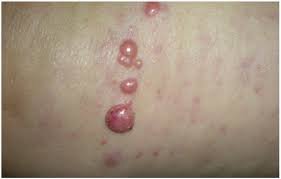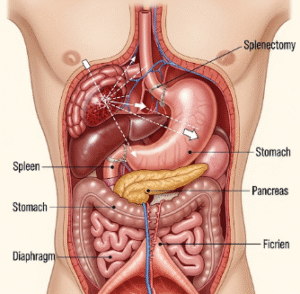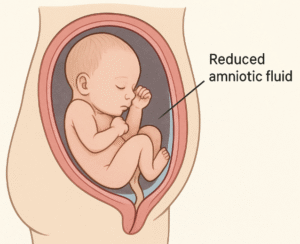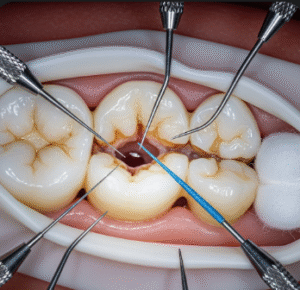What it is
Dysmenorrhea refers to painful menstrual cramps that occur before or during periods. It is one of the most common gynecological problems affecting women of reproductive age.
✔️ Types:
- Primary dysmenorrhea → Pain without underlying disease, often beginning in adolescence.
- Secondary dysmenorrhea → Pain caused by medical conditions such as endometriosis, adenomyosis, pelvic infections, or fibroids.
✔️ Symptoms: Cramping in the lower abdomen, back pain, nausea, fatigue, diarrhea, or headaches.
✔️ Impact: Severe dysmenorrhea can disrupt work, school, and daily life.
➡️ In Korea, treatments are available at gynecology clinics, university hospitals, and women’s health centers, often combining modern medicine and traditional Korean medicine for effective relief.
Why it’s done
Treatment for dysmenorrhea is essential because:
🔹 Relieves severe menstrual pain and improves quality of life.
🔹 Detects and treats underlying causes like endometriosis.
🔹 Prevents complications such as infertility linked to secondary causes.
🔹 Supports mental health by reducing stress and anxiety from chronic pain.
🔹 Improves productivity at school or work.
💡 Highlight: Early and proper treatment ensures women can lead a pain-free and active life during their cycles.
Alternatives
There are multiple management options for painful periods, ranging from home remedies to medical treatments:
➡️ Lifestyle changes – exercise, heat pads, stress reduction, healthy diet.
➡️ Over-the-counter pain relievers (ibuprofen, naproxen).
➡️ Hormonal birth control – pills, IUDs, implants, or injections to regulate cycles.
➡️ Surgical treatments – laparoscopy for endometriosis, removal of fibroids.
➡️ Traditional Korean medicine – acupuncture and herbal remedies are commonly used in Korea.
⚠️ Note: While self-care helps mild cases, persistent or severe dysmenorrhea requires professional medical evaluation.
Preparation
Before visiting a clinic in Korea for dysmenorrhea treatment, preparation usually includes:
✔️ Tracking pain patterns – severity, duration, and cycle timing.
✔️ Listing symptoms – nausea, heavy bleeding, mood swings, or irregular cycles.
✔️ Medical history – including previous diagnoses of endometriosis or pelvic infections.
✔️ Lifestyle review – diet, exercise, stress levels, and use of pain medication.
✔️ Fertility goals – important in case treatments may affect future pregnancy planning.
💡 Tip: Korean doctors often ask patients to bring a menstrual diary or app records to better understand symptoms.
How it’s done
Treatment for dysmenorrhea in Korea follows a step-by-step approach:
- Consultation and exam → Gynecologist reviews symptoms and medical history.
- Diagnostic tests → Blood work, pelvic ultrasound, or laparoscopy for secondary causes.
- Pain management:
- NSAIDs (ibuprofen, naproxen) to block pain-inducing chemicals (prostaglandins).
- Hormonal contraceptives (pills, injections, IUDs) to reduce cramps and regulate cycles.
- Lifestyle advice → Regular exercise, warm compresses, and stress management.
- Surgical intervention (if needed):
- Laparoscopy to treat endometriosis or remove fibroids.
- Hysteroscopy to correct uterine abnormalities.
- Complementary therapy:
- Acupuncture and herbal medicine, widely practiced in Korean women’s health centers.
💡 Highlight: Korea’s healthcare system integrates Western gynecology and traditional medicine, giving women multiple paths to relief.
Recovery
Recovery depends on treatment type:
✔️ Medication management → Relief often starts within the first few cycles.
✔️ Hormonal therapy → Regulates cycles and reduces cramps within 2–3 months.
✔️ Surgical treatment → Recovery takes about 1–2 weeks, with long-term relief if conditions like endometriosis are addressed.
✔️ Lifestyle and traditional therapy → Benefits increase gradually with consistency.
When to revisit a doctor:
➡️ Pain persists despite treatment.
➡️ Periods suddenly become more painful after years of normal cycles.
➡️ Symptoms include fever, very heavy bleeding, or unusual discharge.
💡 Important: Ongoing follow-up ensures treatment effectiveness and helps adjust therapies as needed.
Treatment option in Korea
Korea provides world-class care for dysmenorrhea management:
⭐ University hospitals and gynecology clinics with advanced imaging and lab tests.
⭐ Fertility-focused centers for women with endometriosis-related pain.
⭐ Integration of Western and Korean traditional medicine, including acupuncture and herbal therapy.
⭐ Affordable treatment costs compared to many Western countries.
⭐ Multilingual support for foreign patients in major hospitals.
💡 Highlight: Korea’s healthcare combines modern precision and traditional holistic approaches, making it one of the best places for dysmenorrhea treatment.
Key Highlights
✔️ Dysmenorrhea causes severe menstrual pain that can disrupt life.
✔️ Treatment ranges from pain relievers to hormonal and surgical options.
✔️ Traditional Korean medicine offers acupuncture and herbal alternatives.
✔️ Recovery depends on treatment type but is usually effective within weeks or months.
✔️ Korean clinics provide advanced, holistic, and affordable care.













